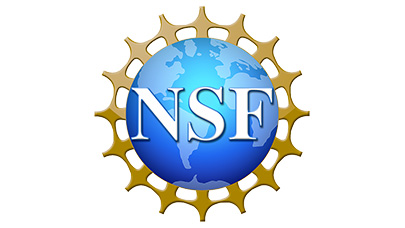The National Science Foundation is seeking supplemental requests for access on its leadership-class computers Blue Waters and Frontera to enable “fundamental science and engineering research that would otherwise not be possible.” Principal investigators (PIs) with active NSF awards are invited to submit funding requests no later than February 1, 2019. Resources will be available for the allocations starting April 1, 2019, and running through December 2019.
 Jim Kurose, the National Science Foundation’s assistant director of computer and information science and engineering, made the announcement in a Dear Colleague letter, dated Dec. 12. For Blue Waters, the Cray machine deployed at the National Center for Supercomputing Applications, NSF aims to offer 125 million node hours distributed among five to six proposals. Allocations of up to 34 million node hours split among 15-20 requests will be available on Frontera, the NSF’s new tier-1 system built by Dell-EMC and installed at the Texas Advanced Computing Center.
Jim Kurose, the National Science Foundation’s assistant director of computer and information science and engineering, made the announcement in a Dear Colleague letter, dated Dec. 12. For Blue Waters, the Cray machine deployed at the National Center for Supercomputing Applications, NSF aims to offer 125 million node hours distributed among five to six proposals. Allocations of up to 34 million node hours split among 15-20 requests will be available on Frontera, the NSF’s new tier-1 system built by Dell-EMC and installed at the Texas Advanced Computing Center.
Further details are outlined in this excerpt:
BLUE WATERS
Blue Waters is one of the most powerful academic supercomputers in the world. It is deployed at the National Center for Supercomputing Applications (NCSA) at the University of Illinois at Urbana-Champaign (UIUC). Blue Waters is a Cray XE system with over 22,000 AMD processors and 4,000 NVIDIA Graphics Processor Units (GPUs). The system also has significant memory and storage capabilities. More information about the system can be found at https://bluewaters.ncsa.illinois.edu/blue-waters-overview. The Blue Waters system will continue full operations through December 2019.
Principal Investigators (PIs) with active NSF awards and a compelling need for significant computation requirements to solve grand challenge problems in S&E are invited to submit supplemental funding requests for allocations on Blue Waters. NSF anticipates 125 million node hours will be available for allocation as supplements to active NSF awards for the period April through December 2019, and further anticipates these node hours will be distributed among five to six such supplemental funding requests with clearly justified goals for solving significant grand challenge research problems in any S&E domain.
NSF’s Proposal and Award Policies and Procedures Guide (PAPPG) provides specific guidance on preparing supplemental funding requests (see Chapter VI.E.4). NSF anticipates supplemental funding requests pursuant to this DCL may include as part of their budgets up to $15,000 to support travel for technical coordination with the Blue Waters team.
A supplemental funding request for a Blue Waters allocation must specify and clearly justify the requested allocation in terms of node hours (see https://bluewaters.ncsa.illinois.edu/node_core_comparison for more information about Blue Waters node performance), and must address the following:
• A compelling articulation of the S&E grand challenge research problem that is being addressed that justifies the need for a large compute allocation on the Blue Waters system;
• A demonstration of a high degree of readiness to utilize the remaining computer cycles on the Blue Waters system; and
• A demonstration of sufficient existing funding to directly support the S&E research that is being proposed.
 FRONTERA
FRONTERA
Frontera is anticipated to be the most powerful academic supercomputer ever deployed by NSF. The system will be housed at the Texas Advanced Computing Center (TACC) at The University of Texas at Austin and is expected to begin early operations in early 2019. Frontera will be a DellEMC system and will provision over 16,000 Intel XEON processors, as well as significant GPU, storage, and memory capabilities. More information about the system can be found at https://www.tacc.utexas.edu/systems/frontera.
PIs with active NSF awards are invited to submit supplemental funding requests for an early-science allocation on Frontera system. Early-science teams will closely collaborate with the Frontera project team to prepare and port scientific codes at the largest scale, and lessons learned from Frontera early-science users will be incorporated into future operational support for the system. A key goal of this early-science allocation is to support S&E research that would not otherwise be possible without access to this unique new leadership-class computing capability. NSF anticipates 34 million node hours will be available for allocation as supplements to active NSF awards for the period between April and December 2019, and further anticipates these node hours will be distributed among 15 to 20 such supplemental funding requests. The anticipated start date for early user access to Frontera is April 2019.
NSF’s PAPPG provides specific guidance on preparing a request for supplemental funding (see Chapter VI.E.4). NSF anticipates supplemental funding requests pursuant to this DCL may include as part of their budgets up to $15,000 to support travel for technical coordination with the Frontera project team to enable collaborative code porting activities.
A supplemental funding request for a Frontera early-science allocation must specify and clearly justify the requested allocation in terms of node hours, and must address the following:
• A compelling articulation of the S&E research problem that is being addressed via the request;
• A convincing case for the need to access a leadership-class computing system, and the inability to conduct the S&E research elsewhere; and
• A demonstration of sufficient existing funding to directly support the S&E research that is being proposed.
Read the full letter here: https://www.nsf.gov/pubs/2019/nsf19030/nsf19030.jsp




























































